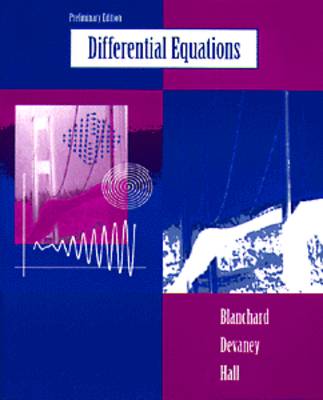Miscellaneous/Catalogs S.
1 total work
Differential Equations
by Paul Blanchard, Robert L. Devaney, and Glen Hall
Published 6 December 1995
More than 30 schools adopted prepublication versions of this innovative new text before its release. The excitement is spreading - and your students should be a part of it! We are in the midst of a technological revolution, for which no other course on the mathematics curriculum is more significant than differential equations. Computers and graphing calculators can now rapidly graph approximate solutions that students must be prepared to interpret and evaluate for validity. Now more than ever, students must learn to think graphically as well as analytically, since graphical illustration of quantitative information shapes how we communicate today. There is also a "nonlinear revolution" occurring in the sciences, engineering, and mathematics. Approaches that embrace a multitude of perspectives are growing in popularity, finding a place alongside conventional linear thinking. In differential equations, this means students should emerge from a course of study able to distinguish the difference between linear and nonlinear phenomena. They must also be able to evaluate the validity of techniques applied to nonlinear systems as well as linear ones. If you've recognized the signals of this revolution in your department, you should take a look at the fresh new approach taken in this text.
